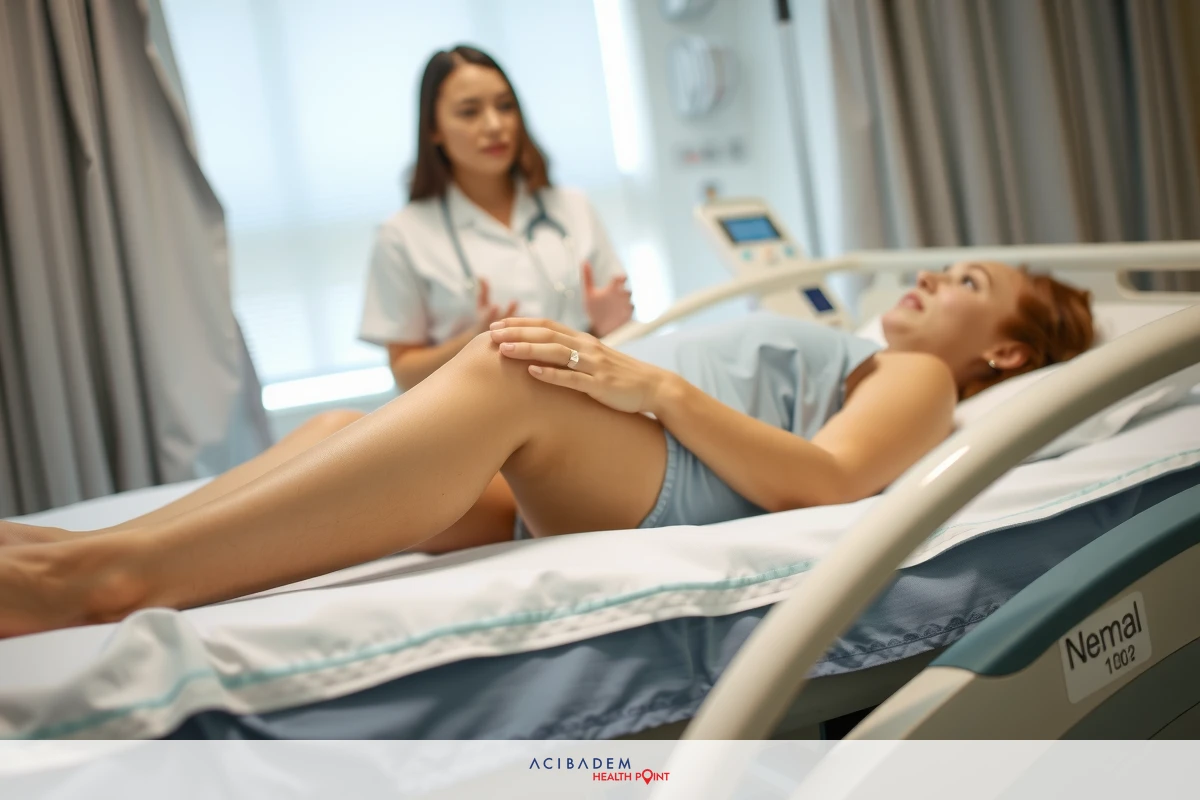How Long Does Swelling Last After Knee Arthroscopy?
How Long Does Swelling Last After Knee Arthroscopy? Swelling is a normal part of healing after knee arthroscopy. It’s the body’s way of dealing with the small changes made inside your knee. Most people see swelling go down in a few days to weeks. The time it takes can vary from person to person though.
To deal with swelling there are clear steps you can take at home. Use ice on your knee and keep it up when you sit or lie down. These actions help reduce swelling and speed up recovery. Keep moving within limits set by your doctor for good results.
As days pass you will likely notice less and less swelling. Check with your doctor if things don’t seem right or if pain lasts longer than expected. They’ll guide you through what happens next on your path back to daily life activities.
What is Knee Arthroscopy?
Knee arthroscopy is a surgical technique used to look inside the knee joint. It helps doctors diagnose and treat problems with ease. This procedure is minimally invasive which means it’s not as harsh as open surgery. During knee arthroscopy only small cuts are made in your skin.
The surgeon uses a tiny camera called an arthroscope during the procedure. They insert this through one of the small cuts they make around your knee. The camera sends live images to a screen so the surgeon can see all that’s happening inside your joint.
Besides looking around tools can also be used in knee arthroscopy for fixing issues. If there’s damaged tissue or other problems the surgeon may repair them right away. This could mean less pain and faster healing for you after surgery.

Recovery from this kind of surgery tends to be quicker than traditional methods. Swelling and discomfort are common but don’t last long if you follow care steps at home correctly. Rest assured that with time and proper care recovery will bring good results.
Swelling After Knee Arthroscopy
Swelling after knee arthroscopy is a natural response from your body. It happens as part of the healing process when tissues are disturbed. Even though it’s minimally invasive any surgery can trigger swelling. This is because your body sends extra fluid to protect and heal the knee.
The duration of swelling varies for each person depending on several factors. Swellings may continue for a few days after surgery. How well you follow post-operative care plays a big role in this time frame. The complexity of what was done during surgery also affects how long swelling will last. Usually patients see an improvement within days or weeks.
To aid recovery and reduce swelling keeping the leg elevated helps a lot. Use ice packs to bring down the inflammation; they can be very helpful too. Be gentle with movements but don’t stay still for too long either — light activity promotes good circulation.
Healing fully takes patience and can’t be rushed — everyone’s body mends at its own pace. If you’re worried about how much your knee swells up or if it stays puffy for longer than usual talk to your doctor right away They’ll check everything out and make sure you’re on track with your recovery plan.
Managing Swelling
After knee arthroscopy managing swelling is key to a good recovery. Start with ice therapy; apply cold packs on your knee for short periods. This helps reduce pain and swelling by calming down blood flow to the area. Be sure not to put ice directly on your skin—wrap it in a cloth first.
Elevation is another simple but effective way to manage swelling. When you’re sitting or lying down use pillows to keep your leg raised above heart level. Doing this several times a day can make a big difference in how much your knee swells up.
Lastly compression garments like elastic bandages or special sleeves might be suggested by doctors. These snugly wrap around your knee and offer support while keeping swelling under control. If needed over-the- counter pain medication can also ease discomfort as you heal — just follow what the doctor says about which ones and how often to take them.
Recovery Process
The recovery process after knee arthroscopy starts right when the surgery ends. Your care team will move you to a recovery room where they watch your vital signs as you wake up from anesthesia. They’ll check on your knee and make sure pain is under control before you go home. Most patients leave the hospital on the same day of their procedure.
At home rest is crucial during the first few days post-surgery. You should limit walking and avoid putting too much weight on your operated leg. Crutches or a walker can help keep pressure off your knee while moving around for essential tasks.
Physical therapy often begins soon after surgery to aid in healing and strengthen your knee. A therapist will guide you through rehabilitation exercises that are safe to do at this early stage. These movements improve flexibility and support muscle regrowth around your joint.
As weeks pass these exercises become more demanding to fully restore function in your knee. It’s important not only to do them but also follow how many times and how often they’re done each day. Following this plan closely makes a big difference in how well and quickly you recover.
Finally regular follow-ups with your surgeon are part of the recovery process too; these let them see how well you’re healing over time. If swelling or pain remains longer than normal don’t hesitate to tell them—it might need extra attention for proper healing.
Returning to Normal Activities
Regaining the ability to do everyday tasks is a common goal after knee arthroscopy. The timeline for returning to normal activities varies based on individual healing rates and the surgery’s extent. Generally light activities like walking can be resumed quite soon after the procedure. However it’s important not to rush things and risk more swelling or injury.
Doctors usually provide a set of guidelines on what you can do and when. These might include limits on weight-bearing or advice against certain movements at first. It’s essential that you follow these instructions closely to avoid setbacks in your recovery process.
More intense activities require patience and careful progression over time. Sports or heavy lifting will need approval from your doctor before you start again. Even then, they should be reintroduced gradually, increasing intensity as your strength improves.
Consultation with your doctor is crucial before making any significant changes in activity level. They know how well you’re healing and what makes sense for your situation. If something feels wrong as you get back into your routine let them know right away.
In short getting back to life as usual takes time after knee arthroscopy; there are no shortcuts in healing properly. Take each day as it comes, listen to professional advice, and celebrate small victories along the way toward full recovery.
Frequently Asked Questions
How long after knee arthroscopy can I start walking?
You can often start walking with crutches or a walker immediately but full weight-bearing might take a 1- 5 days.
Is ice therapy necessary after knee arthroscopy?
Yes ice therapy is an essential part of managing swelling and pain in the initial recovery phase.
When should I consult my doctor if the swelling doesn't go down?
If swelling persists beyond the expected time frame given by your doctor or increases instead of decreasing schedule a consultation.
The answers provided are for informational purposes only and do not constitute medical advice.








